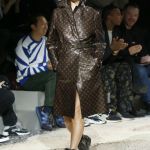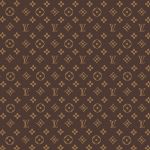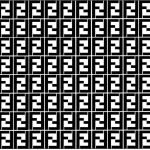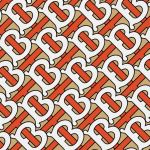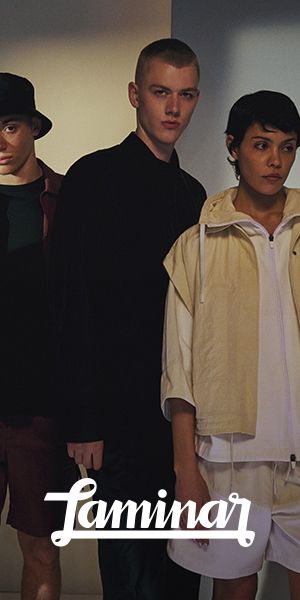
A history of the most iconic patterns
We explain how they were born and why they are so successful
May 17th, 2024
Talking about fashion, we often hear the term "motif" or, more specifically, "pattern", but not everyone knows exactly what that is. They are the distinctive signs that a maison adopts to be recognized, to "sign their garments", that timeless archive texture, capable of giving identity to an item, or to entire collections. You just have to think of the Vuitton monogram, although a hundred years have passed since its creation, it continues to be trendy. Why? Because it is not just nostalgia, not just passion for vintage or old school details, the patterns have not aged because the story, the charm of their roots of a brand is what made the brand itself an icon. A classic Burberry trench with the tartan pattern will never go out of fashion because it has marked fashion, in the near future we will remember the BAPE motif because BAPE is affecting today's world.
In a time in which the fashion houses play with the archives, the collections become more and more recognizable and a reflection of its creative directors, we tell you the story of 9 iconic, successful, but above all timeless patterns.
Louis Vuitton
The famous monogram (brand initials letters repeated many times that characterize the pattern) Louis Vuitton is 122 years old and was designed by Georges Vuitton inspired by Japanese symbolism, to honor the founding father of the Parisian house. The iconic LV motif in the classic shades of brown Damier makes the French fashion house the most counterfeited in history for its fame and importance. This monogram has been the star of many items and accessories, from trunks to bags, from jackets to sweaters, and from belts to sneakers. The creative directors change, but the most famous pattern in the world does not disappear.
Gucci
The Gucci double G motif was designed in 1964 by Aldo Gucci with the initial intent of affixing it only to some of the leather items of the Tuscan brand. Over time, Gucci has been able to evolve thanks to the hands of designers who have followed one another over the years, always being actual and thus making the traditional pattern with the two Gs a milestone in fashion. In less than a century, the Italian brand has moved from travel items and riding to fashion shows, keeping the stylistic canons and symbols of the past intact, such as the interwoven logo - now overlapped -, the green-red-green buckle and the repeated "double G" motif.
Fendi
The double F is currently among the most recognizable patterns in the world. Recently, the graphic designer Hey Reilly re-presented the iconic F by Fendi with the FILA font, a logo that was welcomed by the sports brand during the launch of the Fendi Mania collection. This mixture can be seen as a further approach of high fashion to streetwear, two worlds once distant but now impossible to divide.
Dior
Created by Marc Bohan in the 70s, the Dior monogram is among the most characteristic of all, despite having less fame than the previous ones. In recent times it has been revived by Maria Grazia Chiuri and Kim Jones. Its first appearance in the third millennium, however, happened with John Galliano in the SS00. In this regard, we can not forget to mention the historic bikini denim designed by the current creative director of Maison Margiela, the same who dressed Gisele Bündchen in that famous campaign for the AW 2004 collection.
Burberry
The immortal tartan motif of the English fashion house has been reborn in recent times, brought back in the spotlight by Christopher Bailey, the same man who banned it in the early 2000s to fight counterfeiting and the loss of value that was undergoing Burberry due to chavs, and then with Riccardo Tisci. The designer, helped by Peter Saville, has redesigned the brand pattern founded by Thomas Burberry, renewing and modernizing it, with an eye towards the millennials, beige, orange, and white. The criticisms are not lacking but in this way, the previous pattern has not gained more importance and merit.
A Bathing Ape
The only streetwear brand to have a motif is the Japanese BAPE. Also known as "Cloud Camo", the BAPE Camo takes on all the traits of Japanese culture, distorting the classic military texture and giving it that unique and original cartoonish look that has allowed the Nigo brand to become a global streetwear giant. The impressive monkeys and colors proposed over the years by BAPE Camo are the result of the creativity of the designer, a well-known estimator of twentieth-century culture: the monkeys are inspired by the 1968 film Planet of the Apes, while the nuances of the motif come from Nigo's passion for the American artist Andy Warhol.
Goyard
The origins of this pattern are not certain. Some think that the motif symbolizes the Y of Maison's name, while others believe that the letter represents the three generations of the Goyard family. What do we think? We love the mystery around the goyardine: exclusive and for a few. On the other hand, it is to these rules that the French house has always been redone in the course of its long history dedicated to the creation of luxury bags and suitcases.
Givenchy
One of the most fascinating textures is that of Givenchy: four G crosses, placed side by side, forming squares that are repeated endlessly on bags, scarves, and other items. In 2016, Riccardo Tisci redesigned it alongside the letters of Maison's name to a set of stars, reflecting the incisive and universal value given by the Italian designer to the transalpine brand.
Neil Barrett
We close with the effective "settle" motif proposed by the English designer. Imaginative and particular, Neil Barrett's Lightning Bolt has assumed importance over the past 10-15 years after Gucci's former-stylist has dressed up artists like Justin Timberlake, Lenny Kravitz, and Madonna and provided his own creations for the production of successful films such as Spider-Man 2, Spider-Man 3 and Ghostrider. Today we can find the pattern on many of the items designed by the British creator, who adopted a mature, classic, and modern style for his label born in 1999.



































.jpg)

























































.jpg)
